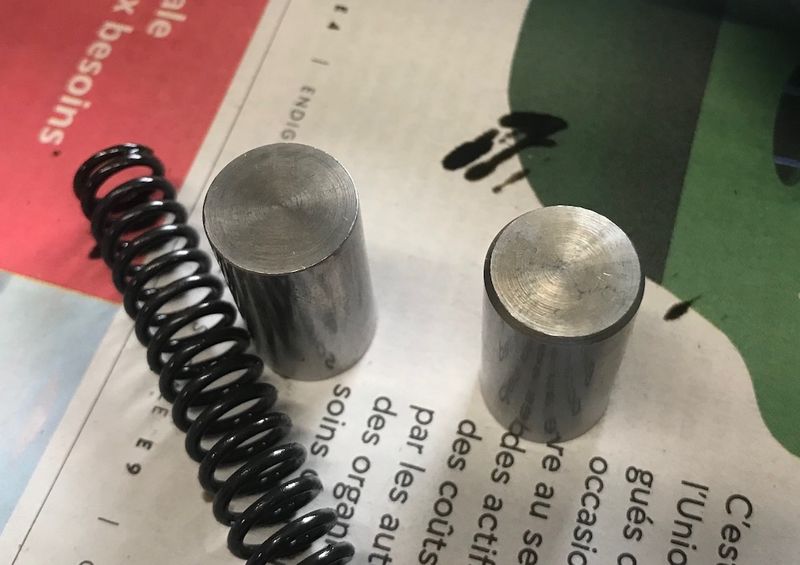I bought the new oil pump piston (997-107-125-01) to replace the original piston (996-107-125-51) since this is recommended to help oil pressure at idle. I also bought a new spring but just noticed that the spring part number has not changed (996-107-127-53).
I wanted to compare the new and old pistons, so removed the piston from my torn down broken 3.2l engine. I understood that the old piston should just drop out, but that was not the case for me, I had to force it out from the top (which can be done with the pump removed) and once that it was I out I could feel that it was slightly mushroomed at the top, which I think is what made it stick in its bore.

Old on the left new on the right.
Questions...
1) Is a new spring recommended because the original one may have lost some of its "spring"?
2) Are the old and new pistions identical except for the chamfer at the top of the new part? If so why could a resourceful person not just machine a slight chamfer on the old piston to get the same effect?
3) Is the mushrooming at the top the reason for the chamfer?
4) What exactly do the piston and spring do and how do they do it? My understanding is that it is a pressure relief valve.
Thanks in advance.